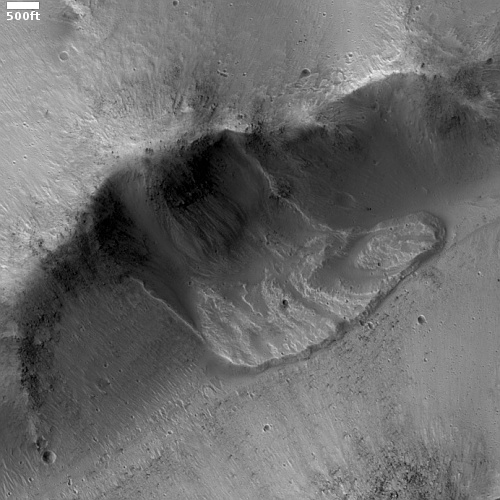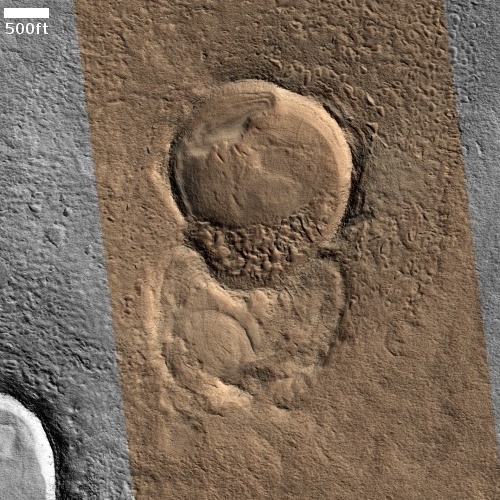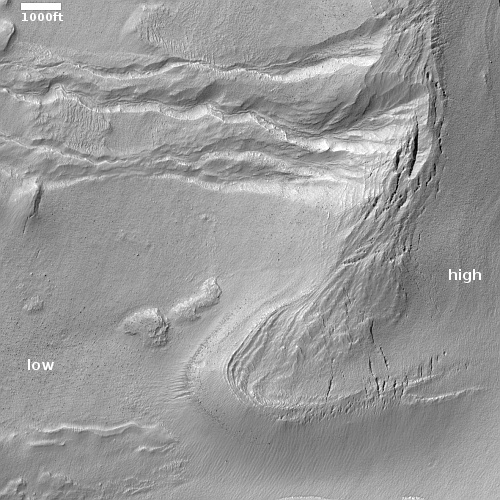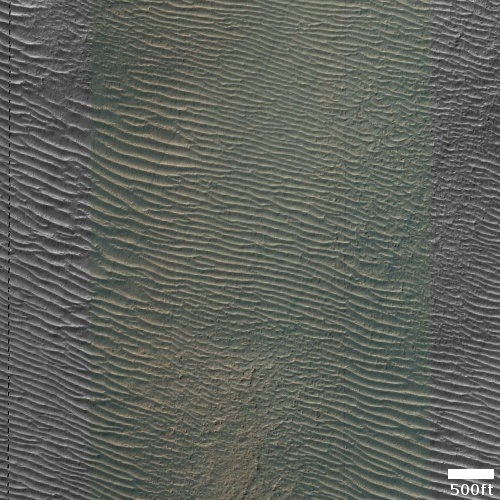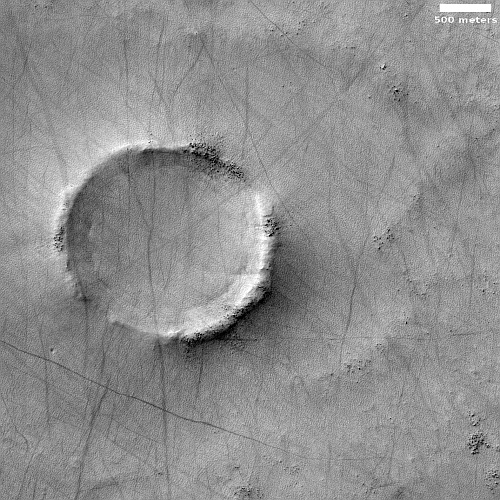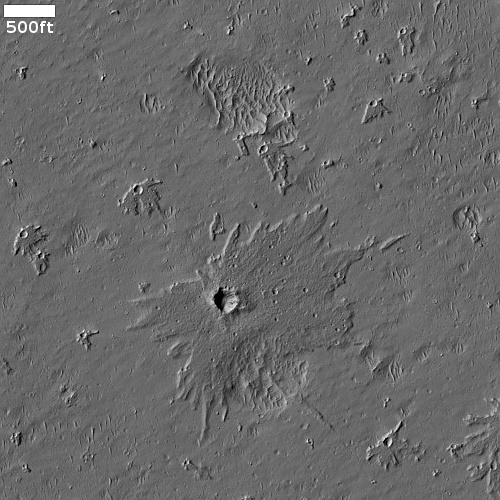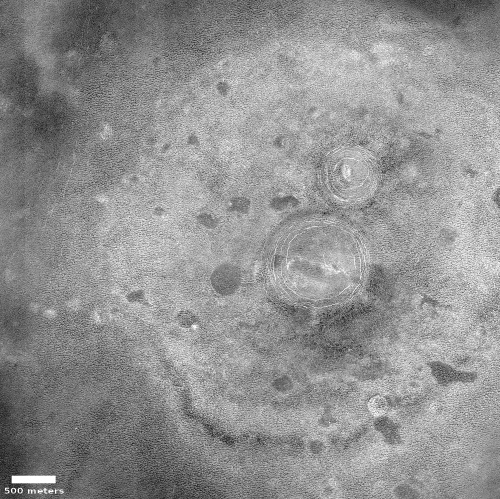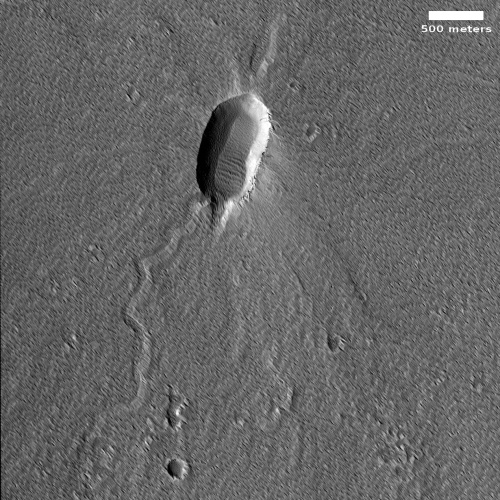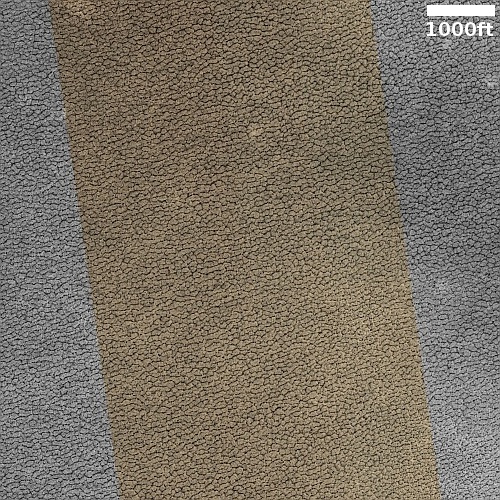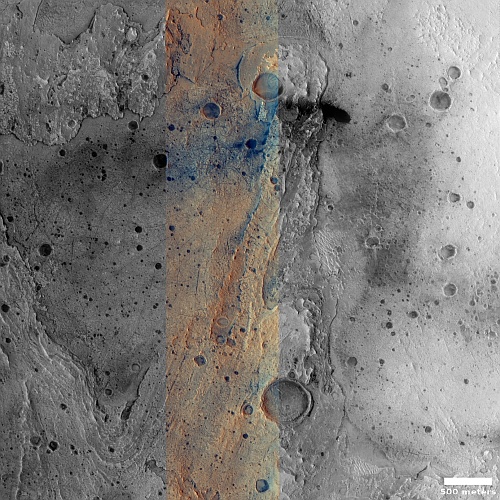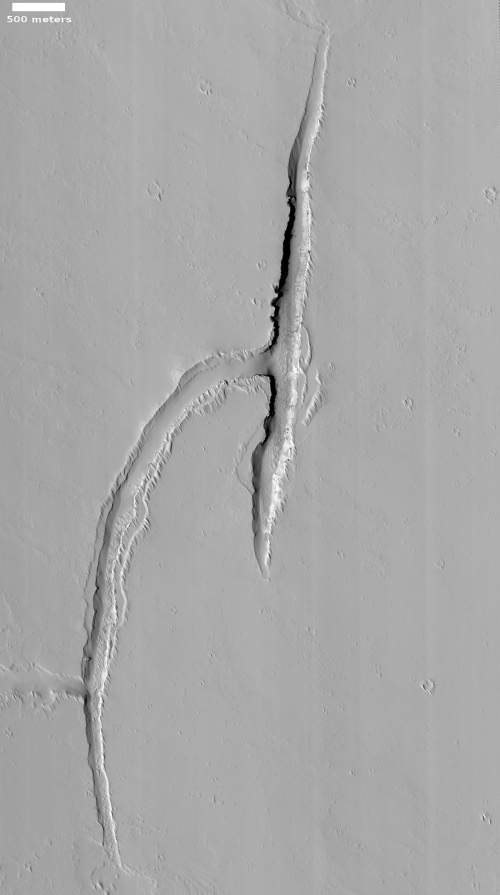A Martian crater with a surface pattern that resembles hanging draperies
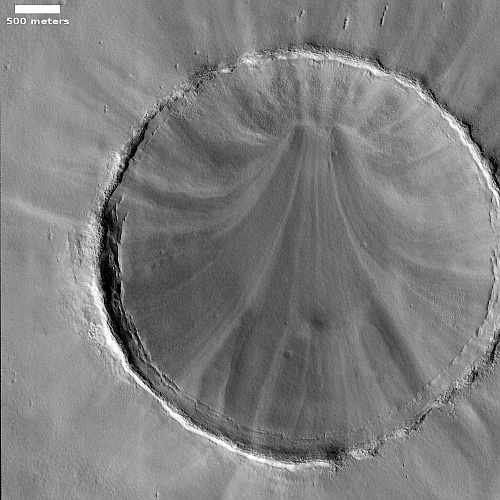
Cool image time! The picture to the right, rotated, cropped, reduced, and enhanced to post here, was taken on January 27, 2023 by the high resolution camera on Mars Reconnaissance Orbiter (MRO), and shows what the scientists label a “streak-spoke pattern” inside the crater. To my eye, the pattern more resembles hanging draperies, neatly tied near the top and then pulled apart as they descend to the ground.
This photo was a follow-up to a previous picture by MRO on February 4, 2008, more than seven Martian years ago, to see if there had been any identifiable changes in that time. Both images were taken in springtime, and despite the passage of time, the 2023 image shows no obvious changes from the 2008 photo.
What caused this distinct pattern? The first guess would be the wind, except if so shouldn’t there have been some change over seven Martian years?
» Read more

Cool image time! The picture to the right, rotated, cropped, reduced, and enhanced to post here, was taken on January 27, 2023 by the high resolution camera on Mars Reconnaissance Orbiter (MRO), and shows what the scientists label a “streak-spoke pattern” inside the crater. To my eye, the pattern more resembles hanging draperies, neatly tied near the top and then pulled apart as they descend to the ground.
This photo was a follow-up to a previous picture by MRO on February 4, 2008, more than seven Martian years ago, to see if there had been any identifiable changes in that time. Both images were taken in springtime, and despite the passage of time, the 2023 image shows no obvious changes from the 2008 photo.
What caused this distinct pattern? The first guess would be the wind, except if so shouldn’t there have been some change over seven Martian years?
» Read more

